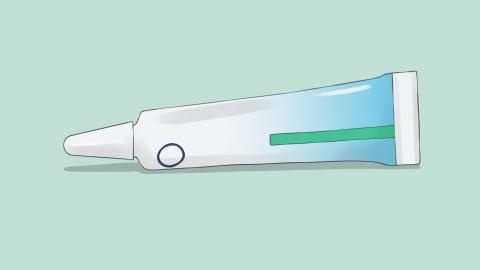What ointment is used for eczema around the anus?
Generally, perianal eczema refers to eczema around the anus. It is usually related to local moisture, friction irritation, pruritus ani, perianal dermatitis, anal fistula and other factors. It is recommended to use ointments reasonably according to the specific cause in a timely manner, including fluticasone propionate cream, mometasone furoate cream, mupirocin ointment, etc. If symptoms are severe, medical treatment is required. Detailed analysis is as follows:

1. Local Moisture
The skin around the human anus is relatively loose and has many folds, making it prone to accumulation of secretions and sweat, which causes excessive local moisture. Failure to clean in time may lead to perianal eczema. In such cases, there is no need for ointment treatment. The affected area can be washed with warm water daily and undergarments should be changed frequently.
2. Friction Irritation
If wearing tight pants or rough-textured underwear, repeated friction against the skin around the anus may also cause perianal eczema, leading to excessive local moisture. Usually, no medication is required. This can be relieved by choosing loose and comfortable underwear and pants.
3. Pruritus Ani
Pruritus ani is mainly related to recurring allergies. When local nerve endings become overly excited, itching occurs. Repeated scratching can lead to perianal eczema, usually accompanied by symptoms such as skin damage and pain. It is recommended to use zinc oxide ointment, hydrocortisone cream, compound dexamethasone acetate cream, and other medications as directed by a physician.
4. Perianal Dermatitis
Perianal dermatitis is usually associated with chemical irritation, bacterial infection, and other factors. As the condition worsens, eczema may gradually develop, often accompanied by symptoms such as thickened skin and pigmentation. As advised by a doctor, medications such as fluticasone propionate cream, mometasone furoate cream, halometasone cream, and others may be used for treatment.
5. Anal Fistula
Anal fistula mainly forms after rupture of perianal abscesses or incision and drainage. If secretions within the fistula are not cleaned in time, repeated local irritation may lead to eczema, accompanied by symptoms such as pus discharge, pain, and lumps at the external opening of the fistula. Under a doctor's guidance, medications such as mupirocin ointment, erythromycin ointment, fusidic acid cream, and others may be used for treatment.
It should be noted that before using the above medications, it is recommended to understand your own condition first. At the same time, attention should be paid to local hygiene during treatment to reduce the risk of infection.






